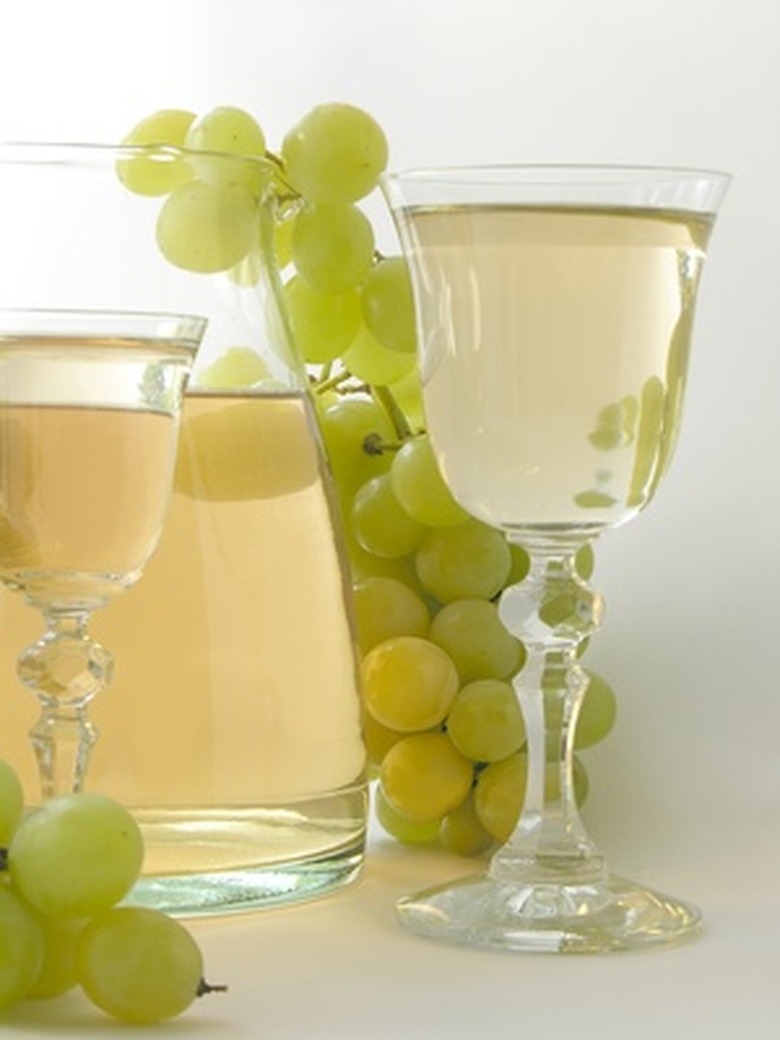The Best Soil Types To Grow Grapes In Maryland
Grapes grow well in Maryland's varied soils and climate. With nearly three dozen wineries that need to purchase wine grapes, Maryland agricultural and rural development officials have focused on the state's need for additional acres planted with both wine and table grapes. The Maryland Rural Enterprise Development Center, the University of Maryland Extension and the Maryland Grape Growers' Association all support viticulture, noting that grapes have a small acreage requirement, can generate high profits and require little water.
Limestone-Based Soil
Joseph A. Fiola, Ph.D., a specialist in viticulture and small fruit at the Western Maryland Research and Education Center in Keedysville, mapped the entire state for potential locations for vineyards, scoring soil suitability and other factors, including a site's altitude, slope and aspect (which way the land slopes). Fiola's report, "Site Suitability Evaluation for Starting Vineyards in Maryland," noted that soils based on Cambrian limestone, found in a wide band in northeastern Washington County, were well drained and featured a high pH, "both optimal for grape production." A second band of Cambrian limestone runs through Frederick County to the east. Soil created from weathered limestone leads to soil alkalinity, which imparts a desired acidity to grapes.
Metamorphic Rock-Based Soil
Most of the state's wineries can be found in the Piedmont plateau, stretching from an area west of Frederick to the head of the Chesapeake Bay. The soils in this area, which includes Frederick, Montgomery, Howad, Carroll, Baltimore and Harford counties, eroded from varying types of metamorphic rocks dating from the Paleozoic and Pre-Cambrian eras. Soils may contain gravel-size rock fragments and stones, as well as iron-bearing rocks that create reddish soils with high clay content. The deeply rooted grapevine does not tolerate soils that remain wet due to clay particles, so within this region, soils with more organic matter and less clay are preferred. Wineries in this region grow Pinot Gris, Chardonnay, Cabernet Franc, Merlot and Cabernet Sauvignon grapes.
- Grapes grow well in Maryland's varied soils and climate.
- Joseph A. Fiola, Ph.D., a specialist in viticulture and small fruit at the Western Maryland Research and Education Center in Keedysville, mapped the entire state for potential locations for vineyards, scoring soil suitability and other factors, including a site's altitude, slope and aspect (which way the land slopes).
Sandy Soil
Because grapes can thrive in any well-drained soil, even the sandy soil of the Eastern Shore, dating from the Quaternary era, works well for grape growing. Grapes grown here enjoy a climate moderated by the Chesapeake Bay. Local government officials are encouraging the development of vineyards through a group called Shore Vines, making this the fastest-growing region of the state for viticulture, according to the Maryland Wineries Association.
Silt Soil
Both Southern Maryland and the Eastern Shore belong geologically to Maryland's Coastal Plain, with pockets of glacial-era silt as well as sand. Southern Maryland is more likely to have a geological feature called fragipans, which restrict root and water penetration, according to University of Maryland agronomist Del Fanning. Nonetheless, Mediterranean grape varieties grow here, including Sangiovese, Montepulciano, Vidal, Symphony and others. This region includes St. Mary's, Charles, Calvert, Prince George's and Anne Arundel counties.
- Because grapes can thrive in any well-drained soil, even the sandy soil of the Eastern Shore, dating from the Quaternary era, works well for grape growing.
- Local government officials are encouraging the development of vineyards through a group called Shore Vines, making this the fastest-growing region of the state for viticulture, according to the Maryland Wineries Association.
Sandstone and Shale
Cold-hardy grapes can find a foothold in Western Maryland's higher-altitude climate and soils eroded from Devonian-era shale, silestone, sandstone and chert. Here, growers focus on Cabernet Franc, Sauvignon, Chardonnay, Petit Verdot, Chambourcin and Seyyval grapes. This region includes Washington, Allegany and Garrett counties.

